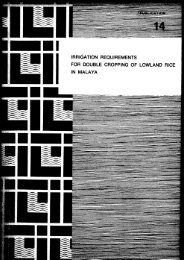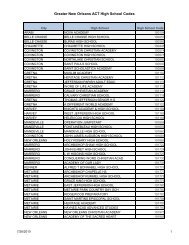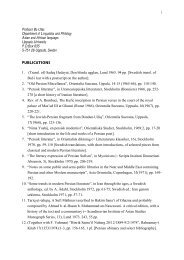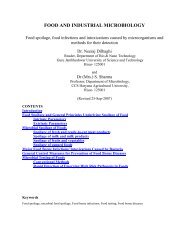On the Future of Indigenous Traditions - Munin
On the Future of Indigenous Traditions - Munin
On the Future of Indigenous Traditions - Munin
Create successful ePaper yourself
Turn your PDF publications into a flip-book with our unique Google optimized e-Paper software.
specified, as <strong>the</strong> socio-cultural orientation was not <strong>the</strong> same as it was <strong>of</strong> <strong>the</strong> o<strong>the</strong>r<br />
communities here. Therefore, it was <strong>the</strong> Panchsheel – <strong>the</strong> five principles formulated<br />
by Verrier Elvin 96 and enunciated as a policy document by Nehru that seemed to be<br />
<strong>the</strong> most ideal principles, when it came to implementing <strong>the</strong>se developmental<br />
programs for <strong>the</strong> Adivasi and tribal peoples, actually it was accepted that <strong>the</strong><br />
Adivasis should: a) develop along <strong>the</strong> lines <strong>of</strong> <strong>the</strong>ir own genius and nothing should be<br />
imposed upon <strong>the</strong>m, b) that <strong>the</strong>ir rights in <strong>the</strong> forest and land should be respected, c)<br />
that <strong>the</strong> role <strong>of</strong> outsiders in <strong>the</strong>ir development should be limited to building <strong>the</strong>ir own<br />
capacity for governance, d) that <strong>the</strong> Adivasi areas should not be over-governed and<br />
loaded with a multiplicity <strong>of</strong> schemes and that indigenous institutions <strong>of</strong> Adivasis<br />
should be tasked with self-governance, and finally e) that <strong>the</strong> results <strong>of</strong> <strong>the</strong>se efforts<br />
should be judged not by statistics or <strong>the</strong> amount <strong>of</strong> money spent but by <strong>the</strong> quality <strong>of</strong><br />
human character that is evolved. However, <strong>the</strong> Panchsheel, is said to have been<br />
‘forgotten, even before <strong>the</strong> ink it was written with had dried’.<br />
What was different for <strong>the</strong> Adivasis in <strong>the</strong> independent India? <strong>On</strong>e can see that, as<br />
already referred in <strong>the</strong> first chapter, <strong>the</strong>ir status now had changed from Adivasis and<br />
Aboriginals to ‘Anusuchit Jana-Jati’ and ‘Scheduled Tribes’. The new Constitution<br />
thus has made some provisions for <strong>the</strong>se ‘Scheduled Tribes’ to be put up in four broad<br />
headings.<br />
1. Protective provisions<br />
2. Developmental provisions<br />
3. Administrative provisions<br />
4. Reservational provisions<br />
There are several sets <strong>of</strong> articles in <strong>the</strong> constitution, specifying <strong>the</strong> said provisions<br />
applicable to <strong>the</strong> Scheduled Tribes, including some o<strong>the</strong>r scheduled categories as <strong>the</strong><br />
case may be. It may not be necessary to go into <strong>the</strong> details <strong>of</strong> each <strong>of</strong> <strong>the</strong> above<br />
provisions, but <strong>the</strong> only one that deals with administrative provisions would be<br />
important for us to critically look into, when it comes to policies both at <strong>the</strong> central as<br />
well as state level administrative provisions.<br />
96<br />
Verrier Elvin: An English anthropologist who is well known for his remarkable works on Tribal<br />
people in India.<br />
65

















